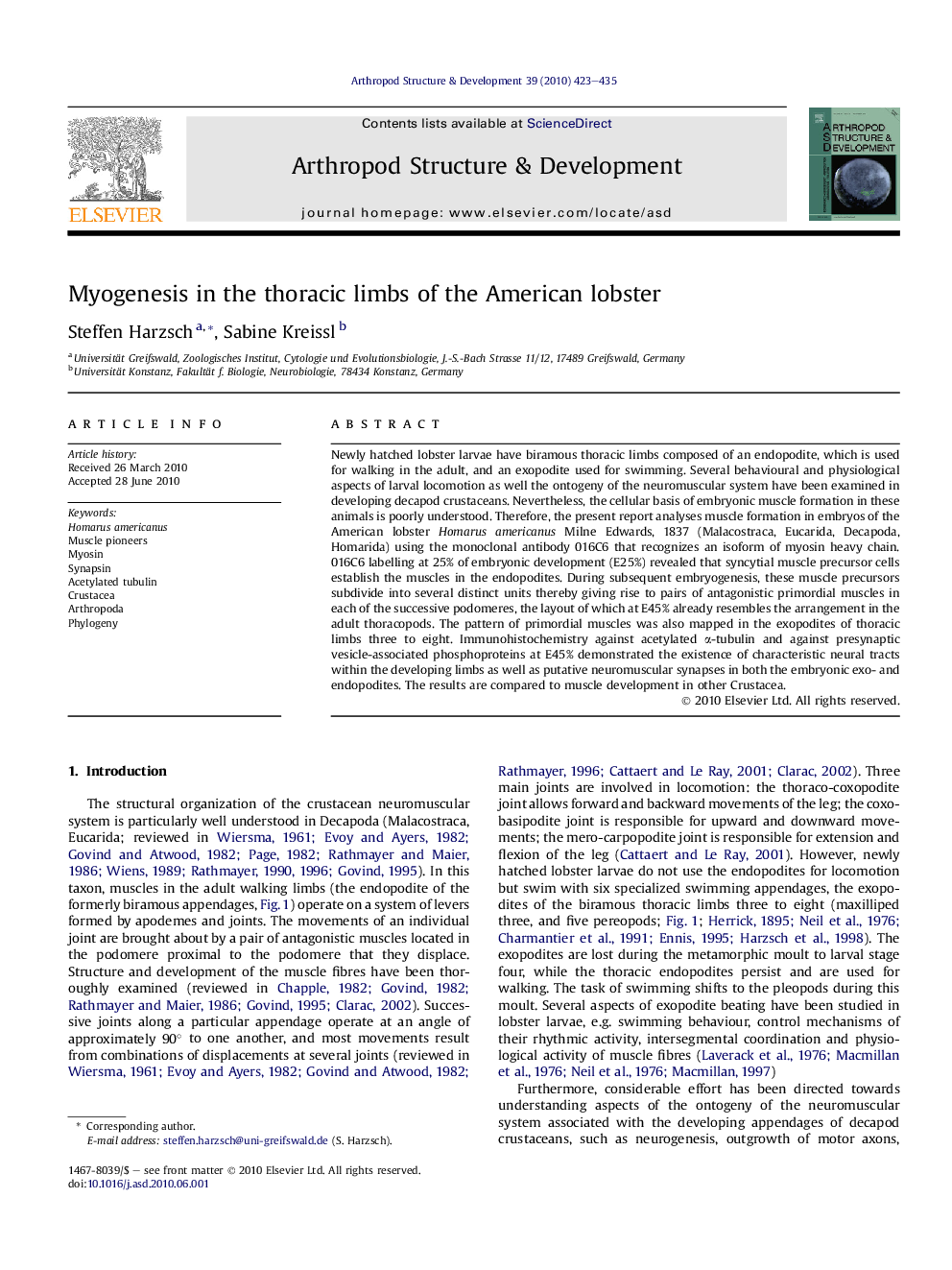| Article ID | Journal | Published Year | Pages | File Type |
|---|---|---|---|---|
| 2778923 | Arthropod Structure & Development | 2010 | 13 Pages |
Newly hatched lobster larvae have biramous thoracic limbs composed of an endopodite, which is used for walking in the adult, and an exopodite used for swimming. Several behavioural and physiological aspects of larval locomotion as well the ontogeny of the neuromuscular system have been examined in developing decapod crustaceans. Nevertheless, the cellular basis of embryonic muscle formation in these animals is poorly understood. Therefore, the present report analyses muscle formation in embryos of the American lobster Homarus americanus Milne Edwards, 1837 (Malacostraca, Eucarida, Decapoda, Homarida) using the monoclonal antibody 016C6 that recognizes an isoform of myosin heavy chain. 016C6 labelling at 25% of embryonic development (E25%) revealed that syncytial muscle precursor cells establish the muscles in the endopodites. During subsequent embryogenesis, these muscle precursors subdivide into several distinct units thereby giving rise to pairs of antagonistic primordial muscles in each of the successive podomeres, the layout of which at E45% already resembles the arrangement in the adult thoracopods. The pattern of primordial muscles was also mapped in the exopodites of thoracic limbs three to eight. Immunohistochemistry against acetylated α-tubulin and against presynaptic vesicle-associated phosphoproteins at E45% demonstrated the existence of characteristic neural tracts within the developing limbs as well as putative neuromuscular synapses in both the embryonic exo- and endopodites. The results are compared to muscle development in other Crustacea.
